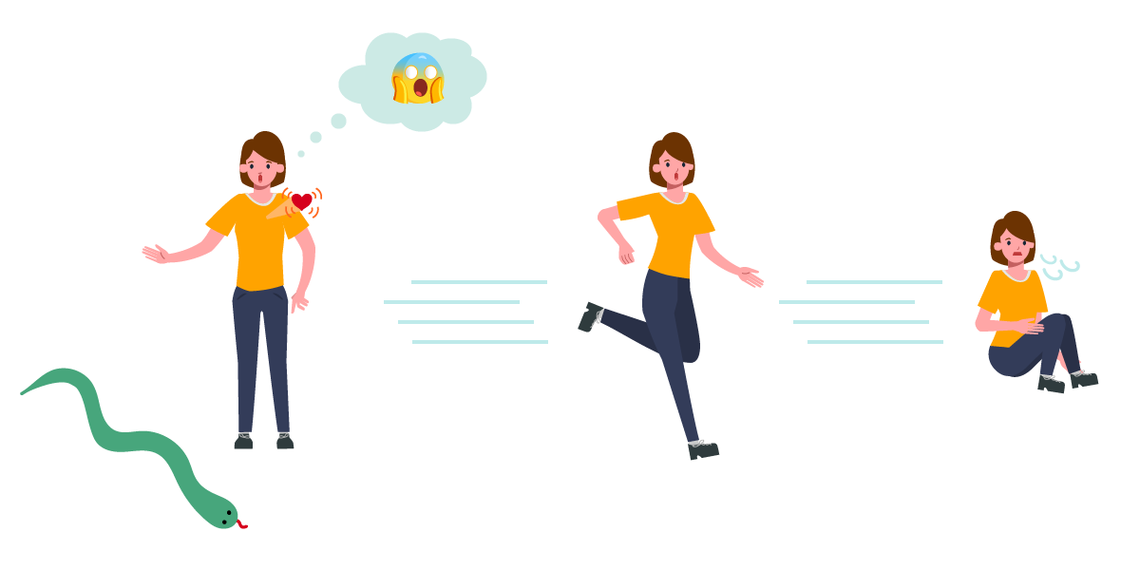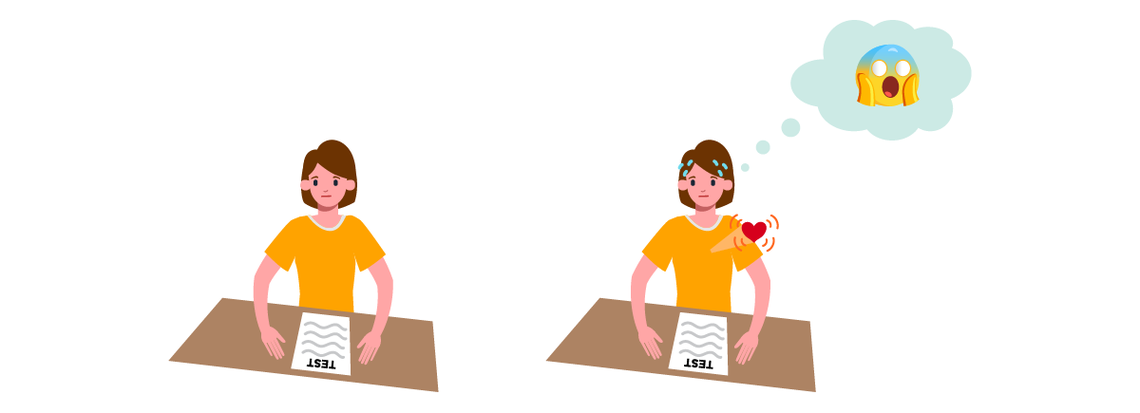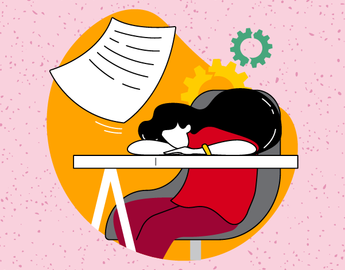Test anxiety is a relatively common experience for undergraduate students. Studies report that 25-40% of post-secondary students experience test anxiety during their studies (Huntley et al., 2016). In 2016, over 64% of students reported feeling overwhelming anxiety in general (Woodgate et al., 2020).
Students who regularly experience test anxiety are less likely to complete their degree or are more likely to take longer to complete their degree. Faculty are likely to frequently teach students who may experience test anxiety. By understanding test anxiety and its cognitive, affective, and psychological factors, faculty can better understand how they can play a role in reducing and supporting students dealing with test anxiety.
Undergraduate student gives a description of their experience with test anxiety. Voice actor: Susana Puche Saud
Fear

Anxiety

What is test anxiety?
Anxiety is something we all experience and is a normal and inevitable part of life. Anxiety serves an adaptive purpose by drawing attention to situations where one experiences a lack of control and/or uncertainty. Healthy anxiety helps to plan and prepare; it can motivate us when we need to perform; it can even tell us to slow down or step away from events when it is helpful to do so. For most people, it is common and normal to feel anxious when we try something new or different, when we are unsure about our plans, when we have a lot of what-if questions, or when we need to perform.
Often anxiety is compared to the fear response. In the fear response, a physical threat is identified, and this threat (or stimuli) triggers a response in the sympathetic nervous system. If the threat was a bear, the sympathetic nervous system would determine the need to fight, flight, or freeze. The sympathetic nervous system prepares the body to respond by increasing breathing and heart rates and stopping non-vital functions.
Anxiety is similar to the fear response in that it is caused by a stimulus or threat; however, the threat is not easily defined. Anxiety is triggered by a perceived threat, rather than a physical threat in the fear response. While the sympathetic nervous system response occurs, the brain goes into a cycle to try to identify the threat and how to respond to it. Anxiety, as an emotion, occurs when an individual experiences uncertainty or lack of control. In a healthy anxiety response, the brain uses this information to plan and prepare. In a problematic anxiety response, the brain gets caught in an ongoing or extended threat response that adds to the complexity of anxiety. In this context, the individual often perceives anxiety as something bad, dangerous, and to be feared.
Anxiety is understood as having both a physiological response (like the fear response) and a cognitive process (i.e., worry). This cognitive process is involved in trying to identify and resolve the threat. Problematic anxiety demands certainty and control, neither of which are fully possible; therefore, the threat response may feel more difficult to resolve.
Worry and the cognitive impact of test anxiety
As a form of situational anxiety, test anxiety is triggered by the worry associated with a particular event (e.g., tests) (Schillinger et al., 2021). This worry focuses on the negative consequences of poor performance. Often the consequences involve the perceptions of others and social comparison. Students may worry about how faculty, family, and classmates would view the student if the student did not meet performance expectations. This worry is also tied to self-identity and self-worth. Poor performance would challenge students’ understanding of their worth and ability to be successful in an educational context.
Worry is usually more associated with the negative impact of test anxiety than the physiological responses that result from this anxiety. For example, a student may be preoccupied with worry when they focus on the uncertainty of an exam and the feared outcomes through what-ifs and worst-case scenarios. At the same time, they have a desire to address their worries with certainty and control. With all this happening, their sense of worry creates a form of cognitive interference, which impacts the students’ working memory, attention, and memory resources. This sense of worry can increase distractibility and impact student performance.
Experiencing the worry of test anxiety is similar to trying to do a task while an inner voice keeps talking to you about other unrelated elements. For example, imagine trying to dial a phone number while random numbers are being spoken to you. An individual experiencing problematic test anxiety might be fighting to refocus their attention while worry chatters away about all the dangers the student is going to face related to the exam.
Physiological reactions
Cognitive reactions
Lesson checklist
After this lesson, you will be able to:
-
Distinguish between anxiety and fear
-
Differentiate between test anxiety, trait anxiety and stress
-
Explain how anxiety impacts attention, decision-making and memory




